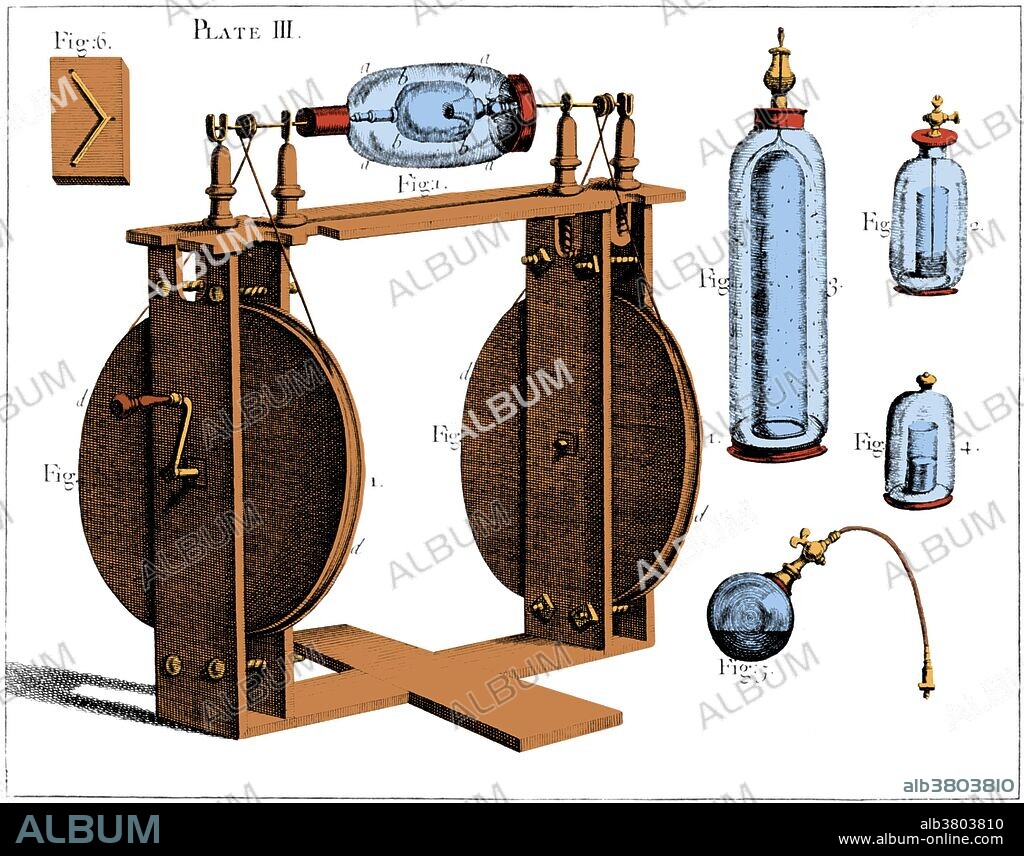alb3803810
Hauksbee Electrical Machine, 18th Century

|
Añadir a otro lightbox |
|
Añadir a otro lightbox |



¿Ya tienes cuenta? Iniciar sesión
¿No tienes cuenta? Regístrate
Compra esta imagen

Título:
Hauksbee Electrical Machine, 18th Century
Descripción:
Ver traducción automática
Hauksbee's electrical machines in which two glass vessels were independently rotated, one within the other. A dry hand applied o the outer revolving vessel produced a glow in the inner one. Turning both in a common or in opposite directions gave a more brilliant light. Francis Hauksbee the Elder (1660-1713) was an English scientist. In 1705 Hauksbee discovered that if he placed a small amount of mercury in the glass of his modified version of von Guericke's generator, evacuated the air from it to create a mild vacuum and rubbed the ball in order to build up a charge, a glow was visible if he placed his hand on the outside of the ball. The glow was bright enough to read by. This effect became the basis of the gas-discharge lamp, which led to neon lighting and mercury vapor lamps. In 1706 he produced an "Influence machine" to generate this effect. In 1709 he published Physico-Mechanical Experiments on Various Subjects which summarized much of his scientific work. This image has been color enhanced.
Crédito:
Album / Science Source / New York Public Library
Autorizaciones:
Modelo: No - Propiedad: No
¿Preguntas relacionadas con los derechos?
¿Preguntas relacionadas con los derechos?
Tamaño imagen:
4200 x 3292 px | 39.6 MB
Tamaño impresión:
35.6 x 27.9 cm | 14.0 x 11.0 in (300 dpi)
Palabras clave:
ARTE • CIENCIA • CIENTIFICO • COLOR • COLOREADA • DIBUJO • ELECTRICIDAD • ENERGIA • EQUIPAMIENTO • EQUIPO • EUROPEO • FAMOSA • FAMOSO • FÍSICA (CIENCIA) • GENERADOR • HISTORIA • HISTORICO • ILUSTRACION • IMPORTANTE • INGLES • INVENCION • MAQUINA • OBRA DE ARTE • S. XVIII • SIGLO XVIII
 Pinterest
Pinterest Twitter
Twitter Facebook
Facebook Copiar enlace
Copiar enlace Email
Email
